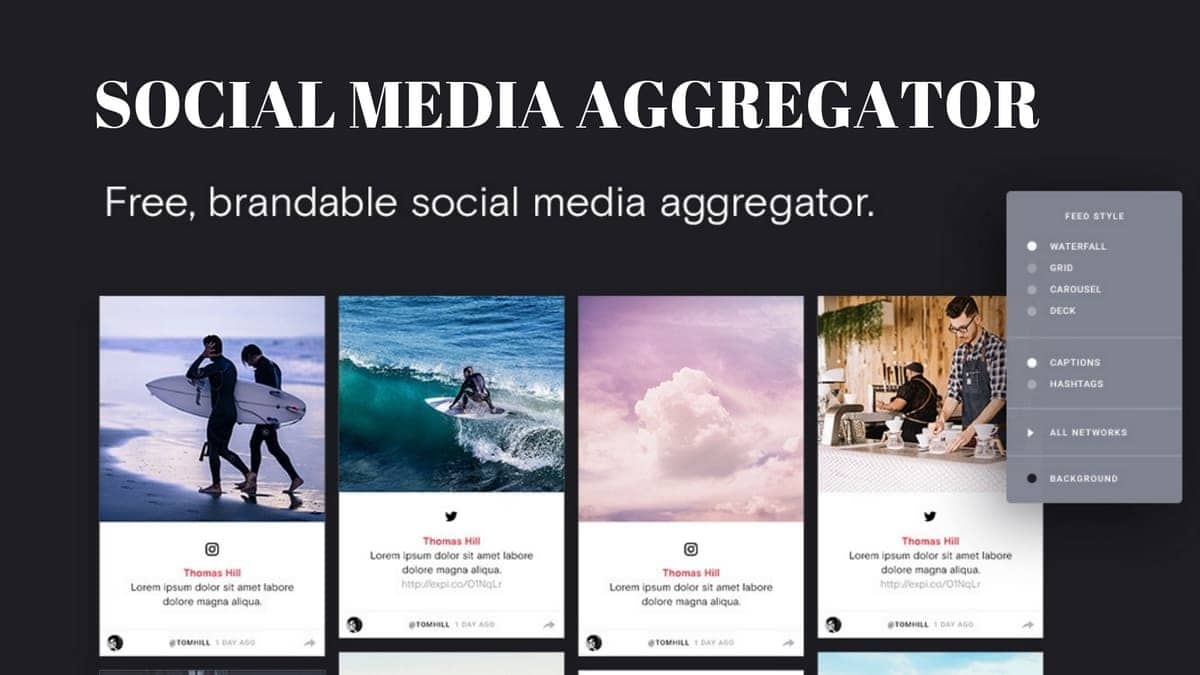
The Power Of Social Media Advertising: A Case Study With 3 Finalsite Schools
Andrew Martin
OCT 19 2018
Social media has quickly become the go-to method for modern marketing and communications for independent schools and districts. It delivers your message directly to your targeted audience; it’s always readily available and easy-to-use for consumers; and it’s oftentimes free — all things that schools love when marketing their culture, community, events, and more.
Fortunately for schools, social media is also a place where prospective, current and former families spend a lot of their time. But despite the promise of social media’s ability to reach your audience, earning their attention and engagement has gotten increasingly more difficult, as social media networks morph into pay-to-play platforms, forcing brands to invest in ads if they want their content to be seen.
What’s more, social media has become a battleground where you’re not just competing with other schools for attention; you’re competing with yourself. Just think about the sheer amount of variety in content your school is likely to publish on any given day. Recruiting new applicants, engaging active alumni, distributing daily and weekly news, releasing event information, managing and maintaining the school’s brand, and continuously building an active social media community.
Your ever-growing catalogue of social media content looks amazing, but all that time and energy spent creating it is wasted if it ends up buried under a mountain of other posts, or goes unnoticed by the target audience.
This phenomenon explains why social media advertising has become so useful and impactful, cutting through the ocean of content (including your own), and providing what is essentially a front-row ticket for everyone viewing your social media accounts. Ads can nearly guarantee that someone viewing your Facebook or Twitter feed is going to see the content that you need them to see, much more so than if published in a regular post amidst a daily stream of a dozen or more other posts.
To help you decide how to approach social media advertising, we’ve selected three Finalsite schools that increased website traffic through social media advertising. Finalsite’s social media consulting team helped these schools develop their advertising campaign at a fraction of the cost of traditional advertising.
Learn More About Finalsite's Social Media Marketing Services
LEARN MOREabout website accesibility
School Year Abroad
Up first is School Year Abroad (SYA), a high school study abroad program that helps juniors and seniors spend a year abroad in Italy, Spain, France, and China. SYA had three campaign goals to accomplish between December 2017 and August 2018:
- Build brand awareness and differentiation
- Increase awareness of study abroad opportunities and deadlines
- Increase interest of applying to School Year Abroad
SYA developed their social media advertising plan with a monthly budget of $350. Their social media platforms of choice? Facebook and Instagram.
In less than one year’s time, SYA grew their social media presence to become the second largest traffic driver to their website, just behind organic searches. Social media also became SYA’s fastest growing channel for digital marketing.
For all you data crunchers out there, SYA saw a 515 percent increase in website sessions during their social media campaign to a session total of more than 27,000 (up from around 4,400 total sessions) during the eight month period. That’s an additional 22,000 plus visitors to SYA’s website since implementing social media ads.
Additionally, total users shot up more than 900 percent from the previous year to a current year total of more than 25,000 (up from around 2,500). Social media advertising contributed to an additional 22,500 users for SYA.
SYA also reported that 91 percent of website sessions during this time were from new visitors, up 94 percent from the previous total of nearly 47 percent that were new visitors on average. So not only did SYA see a large jump in total website sessions, social media ads helped nearly double the number of new visitors on their website.
Now looking directly at SYA’s Instagram results, SYA generated more than 2 million impressions with a total reach of over 640,000. When talking about social media, it’s important to remember that reach is a better number to track since reach only tracks unique views, unlike impressions that counts every time a person views an ad as a new view.
With that in mind, SYA’s total reach of over 640,000 resulted in more than 25,600 clicks for a click-through rate (CTR) of 1.6 percent. For comparison’s sake, the Instagram average CTR for Q1 2018 was 0.52 percent.
Additionally, Google Ads benchmarked the education industry display CTR at 0.53 percent using data from 2018. The search network CTR for education was higher at 3.78 percent. Search network CTRs are almost always higher than display CTRs since users are actively searching for content they want to see, rather than passively viewing display ads that may or may not match their interests.
While those metrics are impressive as far as interactions, what about actual results, primarily the number of application page views on the SYA website?
Social media advertising contributed to 2,211 clicks on the “Click Here to Apply” button for SYA’s study abroad application. SYA also saw 2,419 views on the request information page, and 575 views on the application process page.
Independent Connecticut School
A private, independent day school in Connecticut (name withheld at the request of the school) had three similar campaign goals with a slightly larger budget of $400 to $600 a month. The school wanted to use Facebook and Instagram between September 2017 and February 2018 to:
- Increase school awareness and interest in attending
- Increase social media referral traffic to the school’s homepage
- Promote enrollment through Open Houses and Coffee & Conversation Events
In that five month period, this school was able to use social media advertising to raise awareness of their Open House events and increase interest in enrollment through 427 visits to their “Schedule a Visit” page, and 634 website sessions with three plus page visits.
The school’s entire social media campaign generated more than 490,000 impressions with a total reach of over 74,000 unique visitors. Of those visitors, more than 3,600 clicked on the independent school’s advertisements. That’s a CTR of 0.73 percent, higher than the education industry average of 0.53 percent reported by Google Ads, and 0.52 percent found on Instagram.
And as you can see from the above table, visitors to the school’s website spent at least a minute on each page they visited, up to a maximum time of 3 minutes and 43 seconds on the “Apply Now” page. People typically spend around 10 - 20 seconds on a web page unless there is a clear value proposition displayed in those initial, crucial seconds. It’s clear that visitors to this school’s website saw something that interested them enough to stay on the pages for at least a minute, and up to nearly four minutes on the “Apply Now” page.
It’s also important to point out that the average page per session count for the “Apply Now” page was just over one, meaning that most visitors that landed on that page didn’t visit another. While we can’t say with 100 percent certainty, it’s likely these people clicked on an ad that brought them directly to the “Apply Now” page and took the time to fill out the application.
Whitfield School
Our final school is Whitfield School, an independent coeducational college preparatory day school in St. Louis, Missouri with a focus on liberal arts education.
Whitfield School set aside a monthly budget of $500 to increase their social media presence on Facebook and Twitter between October 2017 and June 2018. Whitfield School’s campaign goals consisted of:
- Increasing awareness of Whitfield School
- Increasing awareness of admissions events
- Driving additional traffic to the school’s homepage
- Promoting hallmarks of Whitfield School to prospective families
In just eight months, Whitfield School saw a nearly 90 percent increase in website sessions to a session total of over 5,300 (up from just over 2,800 sessions). The number of website visitors also jumped up 95 percent to more than 4,000 visitors (up from the past visitor total of a little more than 2,000).
Facebook generated more than 495,000 impressions with a reach of more than 94,000. This resulted in a little more than 3,500 for a stronger than industry average CTR of 0.71 percent. Twitter had fewer impressions than Facebook but a higher ad click total of more than 6,200 clicks for a higher CTR of 3.71 percent. Twitter typically has a higher engagement rate for ads than Facebook, with Facebook’s average CTR hovering around 0.119 percent while Twitter boasts a higher CTR between 1 and 3 percent.
"While our continued strong enrollment growth is due to many school-wide factors, we believe our social media strategy has contributed to our momentum," said Becky Marsh, Director of Communications and Marketing for Whitfield Schools.
"Key metrics from our social ads consistently show double-digit increases, and our admission goals, such as form submissions and Open House registrations, are also being reached. We know that our social campaigns have also strengthened our brand in the competitive St. Louis market."
Key Takeaway
Social media advertising helps schools achieve incredible results at a fraction of the cost of traditional advertising. Social media advertising can cost as little as $3 to reach 1,000 people, drastically lower than $16 for newspaper advertising and $57 for direct mail advertising.
Digital ad spending is also expected to grow to nearly 45 percent of the U.S. total media ad spending in 2020, while every other form of advertising is expected to drop.
By harnessing the power of social media advertising, these three schools generated more than 3 million collective impressions. Social media even became the second largest source of traffic to the SYA website. This should show just how powerful a tool social media advertising can be. It’s a tool every school could, and should, add to their larger overall toolkit when considering how and when to approach school advertising.
ABOUT THE AUTHOR
As Finalsite’s Product Marketing Specialist, Andrew writes blogs and creates videos to share information about all the latest and great Finalsite products. Andrew has more than 10 years of video production experience and a journalism education from the University of South Carolina. He is excited about bringing his experience and expertise to Finalsite.










